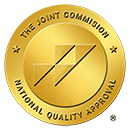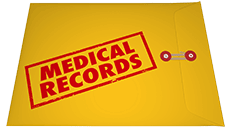Your Guide to Understanding Neurological Emergencies
Neurological emergencies can be the most worrying since often there is no physical evidence to show why the person is in distress, unlike trauma injuries or in known medical conditions.
These are the typical emergencies of this kind you may come across:
Strokes
Stroke is one of the most common causes of death, but also one of the conditions least likely to be understood or recognized by the general public. Stroke is an acute vascular event in the brain, and is caused by blocked blood vessels to, or in, the brain. This reduces the amount of oxygen and nutrients reaching the brain and can lead to brain cells dying. There are two types of stroke:
- Ischemic stroke — caused by a blocked artery. The blockage may come from a blood clot forming in the arteries leading to the brain (thrombotic stroke) or when a blood clot from elsewhere is carried through the arteries before lodging in a narrower artery (embolic stroke).
- Hemorrhagic stroke — cause by a leaking or burst blood vessel. There are also two types of hemorrhagic stroke. An intracerebral hemorrhage is when a blood vessel in the brain bursts, and a subarachnoid hemorrhage which is when a blood vessel on the edge of the brain bursts, spilling blood into the cavity between the brain and the skull.
There is also TIA (transient ischemic attack) which is a temporary blood flow disruption.
All types of stroke are dangerous and potentially life threatening, and should always be treated as an emergency. Symptoms include:
- Difficulty speaking, or understanding spoken words.
- Numbers in arms, legs or face. Normally, one side may be affected more than the other.
- Disturbed vision in one or both eyes.
- Trouble walking, including loss of coordination and dizziness.
- Sudden, severe headache and possible vomiting.
A common acronym to remember signs and symptoms is FAST, standing for Face (a drooping smile), Arms (inability to lift both), Speech (cannot repeat a simple phrase) and Time (Time to call 911 if any of these signs are present). Delays in treatment can result in brain damage or even death.
Severe Headaches or Migraine
As mentioned previously, sudden severe headache could be a symptom of stroke, but there are times when migraine should also be treated as a neurological emergency. Migraine sufferers are used to pain, and should therefore be extra vigilant. The ‘worst migraine ever’ could be a symptom of something else and need emergency treatment. Instances when migraine or severe headache needs emergency treatment include:
- When it continues for 72 hours without a pain-free break of at least four hours. When this happens it’s called ‘status migrainous’ and can be dangerous. There is disagreement in the medical profession over how dangerous, with some saying it could increase the chances of stroke, and others insisting it needs immediate treatment but does not increase the risk of stroke.
- When vomiting and diarrhea constantly repeat, as this can lead to dehydration.
Head Injuries
Head injuries are not always neurological emergencies, so it’s helpful to know what to look for so you can recognize warning signs and act accordingly. Following a head injury, notice:
- Any loss of consciousness at the time of accident
- Headaches or vomiting
- Worsening state of mind
- Confused or disorientated behavior
- Numbness in limbs
- Difficulty staying awake
- Blood or clear fluid discharging from nose or ears
- Seizures
- Symptoms getting worse
If any of these symptoms are present, emergency treatment and evaluation is necessary. Symptoms don’t always show immediately, so monitor the situation for 24 hours and treat any that show up later as an emergency.
Convulsions, Seizures or Fits
The terms convulsions, seizures and fits are often used interchangeably and are caused by sudden, unusual electrical activity in the brain. There can be many causes, including brain or head injury, very high blood pressure, drug abuse, high blood glucose or sodium, heart disease, poisoning or fevers, and epilepsy which occurs when seizures continue even after the cause has been treated.
People having a seizure often display the following behavior:
- A brief blackout.
- Frothing at the mouth or drooling.
- Teeth clenching.
- Uncontrollable spasms in muscles, jerking limbs.
- Suddenly falling.
- Lost bladder or bowel control.
- Bitter taste in the mouth.
- Unusual eye movements.
Convulsions or seizures are often neurological emergencies, and you should call 911 if:
- One seizure rapidly follows the first.
- It’s the first time the person has had a seizure.
- The person is pregnant.
- The seizure lasts longer than five minutes.
- The seizure happens in water.
- The person does not behave normally afterwards.
- This seizure is different to any previous ones.
- The person is a stranger without a medical ID bracelet containing instructional information.
It’s best to always act on the safe side in all these situations. Emergency medical providers would rather anyone make a mistake than hesitate and risk a life.
Used under Creative Commons image attribution license 2.0




